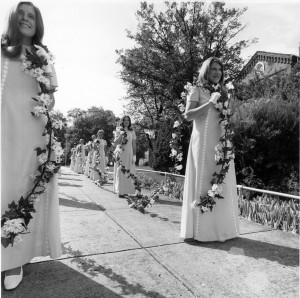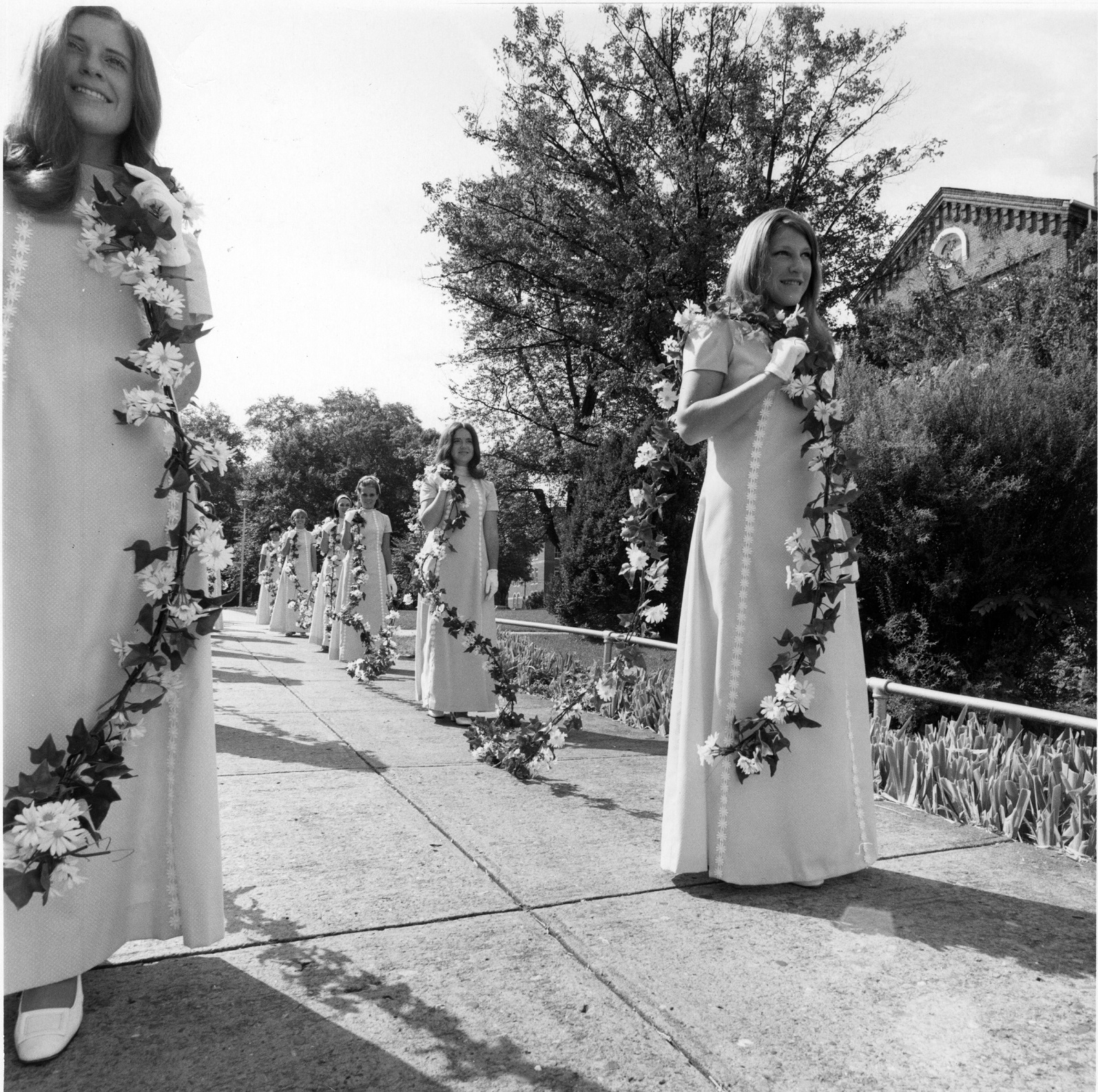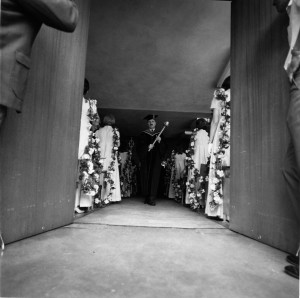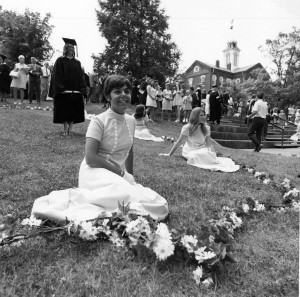Commencement through the years

As the school year slowly winds to an end, many Maryville College seniors will begin to reflect on the fading year—recalling fond memories as they prepare for the Commencement Ceremony. Through its rich history, MC’s campus has been home to over a century’s worth of graduation sentiments.
Though the class of 2016 will have an outdoor Commencement Ceremony on the lawn near the historic Anderson Hall, many alumni remember graduation a bit differently.
“Until 1993, Commencement was held in the chapel,” said retired MC Registrar Martha Hess ’67.
However, the term “chapel” has referred to different buildings over the years. From 1870-1907, the “chapel” was located on the second floor of Anderson Hall. In 1907, Vorhees Chapel was opened on the current site of the Clayton Center for the Arts.
During Vorhees Chapel’s existence, daily attendance of chapel service was a requirement for every MC student. This well-used building housed both the Baccalaureate and Commencement Ceremonies until it burned to the ground in 1947.
After Vorhees Chapel’s demise, both chapel service and the Commencement Ceremony were held in the alumni gym.
The year 1954 saw the opening of the Samuel Tyndale Wilson Chapel in the same location as the former Vorhees Chapel. Though this structure housed years of graduating seniors, the student body had outgrown its walls by 1993, and Commencement was moved outside.
“The Commencement period lasted the full week,” Gail Hafner ‘60said.
At the time, students were not permitted to go to town except at designated times.
With no part-time jobs or mid-week shopping trips, MC students “did more things together as a class,” said Hafner.
Because of this, the senior class usually took the feeling of camaraderie very seriously. This can be clearly seen in the 1930 Commencement Ceremony’s program that lists the class flower, class colors and class motto.
Up until the 1920s, student roles in the Commencement Ceremony were quite plentiful. As can be seen in the respective programs, students often read essays or poems to the gathered crowd. Additionally, if any graduating senior’s father was a minister, he might be asked to speak at Commencement.
Girls from the junior class also had an integral part in Commencement from the turn of the 20th century until 1970. In a tradition whose origin has yet to be located in MC’s archives, female members of the junior class (chosen by a vote) formed two parallel lines and carried a “daisy chain” through which the procession of graduating seniors would walk.
“It was an honor to be chosen,” Hafner said of her own experience as part of the daisy chain in 1959.
Hafner recalls collecting ivy from the woods that the chosen girls would weave together to form a long chain. Later, daisies were added into the woven ivy.
The girls proudly wore dresses fashioned in the colors of spring. The style of the dresses fluctuated through the years.
“I believe my mother made mine,” said Hafner.
When asked what she remembered most about the occasion, Hafner mentioned the stifling heat of the Samuel Tyndale Wilson chapel.
“At that time, the chapel had no air,” Hafner said.
Additionally, both Hafner and Hess wore graduation gowns made from heavy, unbreathable cotton.
“The company would come to campus, measure us and rent the caps and gowns to us,” said Hess.
The students of Hess’s 1967 graduating class, adorned with layers of clothing and perspiration, were organized by height before they marched into the chapel.
“I wanted to walk in with my best friend, but she was two inches shorter than me. To fix the problem, she wore heels and I wore flats on graduation day!” Hess said with a laugh.
Robert Kennedy, on the other hand, recalls a different type of story from his Commencement Ceremony.
After two years of college, Kennedy was unable to continue at MC due to poor grades. Because he was not in school in the fall of 1965, Kennedy was drafted to fight in the Vietnam War.
After his military service, Kennedy returned to MC and graduated in the 1971. He recalled feeling honored to wear the cap and gown at Commencement.
“Not everyone gets a second chance,” Kennedy said.
However, the year 1970 brought with it a series of changes on MC’s campus as well as in the rest of the world.
“Students didn’t want to wear the caps and gowns because it was a set rule. They wanted rid of ‘the establishment,’” said Kennedy.
Between the late 1960’s and 1975, the graduating class was split in half—some students wore caps and gowns while others dressed in what they chose. Beginning in 1975, the senior class took a vote on whether or not the whole class would wear Sunday best or caps and gowns. The results would decide the attire for that year and the vote would be repeated the following year.
Though the Commencement Celebration of 2016 will not feature the “daisy chain” or be held in one of the past chapels, graduating seniors will be walking in the footsteps of nearly two centuries worth of MC alumni.



